S3T Sunday May 7 Special Edition: Flying Wheelchairs - a S3T Interview with Dan Dorszynski

🔊 Listen to this interview on the S3T Podcast
S3T is focused on developing the change leadership skills to notice what needs to be changed, and then work successfully to make that change happen!
Today's newsletter and podcast episode features a critical issue that demands change. We'll be talking with someone directly impacted by this issue, who is one of many working to bring an urgently needed change.
S3T Interview with Dan Dorszynski
I'm excited to share this exclusive S3T interview with Dan Dorszynski the founder of PlayaSport who is a member of S3T, an advocate for mobility rights, and a change leader in every sense of the word.
RP: Dan, welcome to the show. You are a very seasoned world traveler. Tell us about a few of your favorite trips.
Dan:Yeah I've traveled a lot, and its crazy to think about being an electric wheelchair user, and not able to do too much with my arms but still being able to head to places like Singapore, Dubai, South Africa by myself. I've done a lot of solo trips. I went to the Galapagos islands by myself. I think the most insane was a 36 hour trip to Machu Pichu I did with my cousin and a bunch of really amazing people who helped lift me in and out of planes and trains and buses to get up to the top of Machu Pichu - that was super cool. I've been to around 47 countries, about the same amount of states, and just trying to get to all the continents now.
RP: So very seasoned traveler. But you mentioned that when you travel you depend on your wheelchair. (Quick note for listeners: You frequently see people being pushed around in wheelchairs in the airports. But you've probably never seen a person on a plane sitting in their own wheelchair. The airlines don't allow it.) So Dan when you fly, you have to be removed from your wheelchair...what is that like?
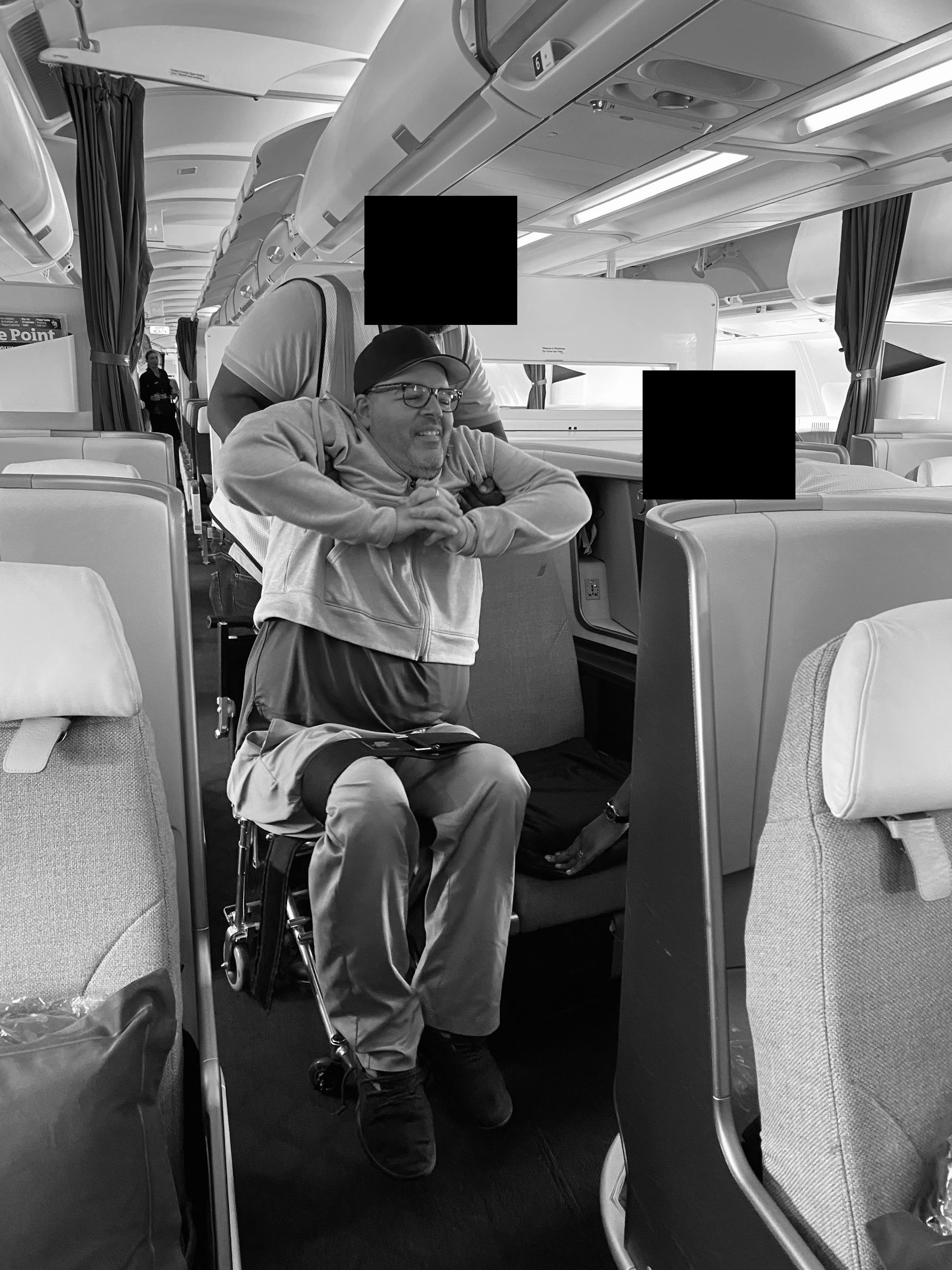
Dan: So flying is very stressful for me actually. Its the only time I'm ever more than a foot away from my wheelchair, so you can imagine having this device you depend on for everything being taken away from you at the door of the airplane being pretty stressful because you don't know if it's going to make it in one piece.
RP: So you're worried that its going to get broken?
Dan: I've had it broken beyond use two times and usually I get scrapes, things will break off, I won't always file a claim because it's not worth waiting in line to file a claim for a simple scrape. But there's other times when I've had to go home with a broken chair, deal with it, try to get around. Luckily I have a backup chair I can use but its not the same chair, so everything becomes overly difficult once my regular chair is damaged. Airlines do pay for repairs, but not always right away, and if I arrive at my destination and have a broken chair and I have to deal with it there, that's way worse because my whole trip is encumbered by this issue.
RP: Sounds like this happens a lot, in fact this happened a couple weeks ago...you sent me a picture.
Dan: I had a connection in Detroit, they bring me my wheelchair, and it only drives in circles. The right wheel was literally a half an inch off the ground. This has never happened before. I didn't know what the heck to do to fix it and I spent four hours in the Delta lounge hoping that the airline mechanics they sent could figure it out, but they couldn't. So I ended up having to fly back home, file a claim and hope to get it fixed as soon as possible so I could go back and continue my trip!
RP: Wow, yeah when I travel I worry about something happening to my luggage, but I could still get around if my luggage got lost. I can't imagine having to constantly worry about something as important as your wheelchair.
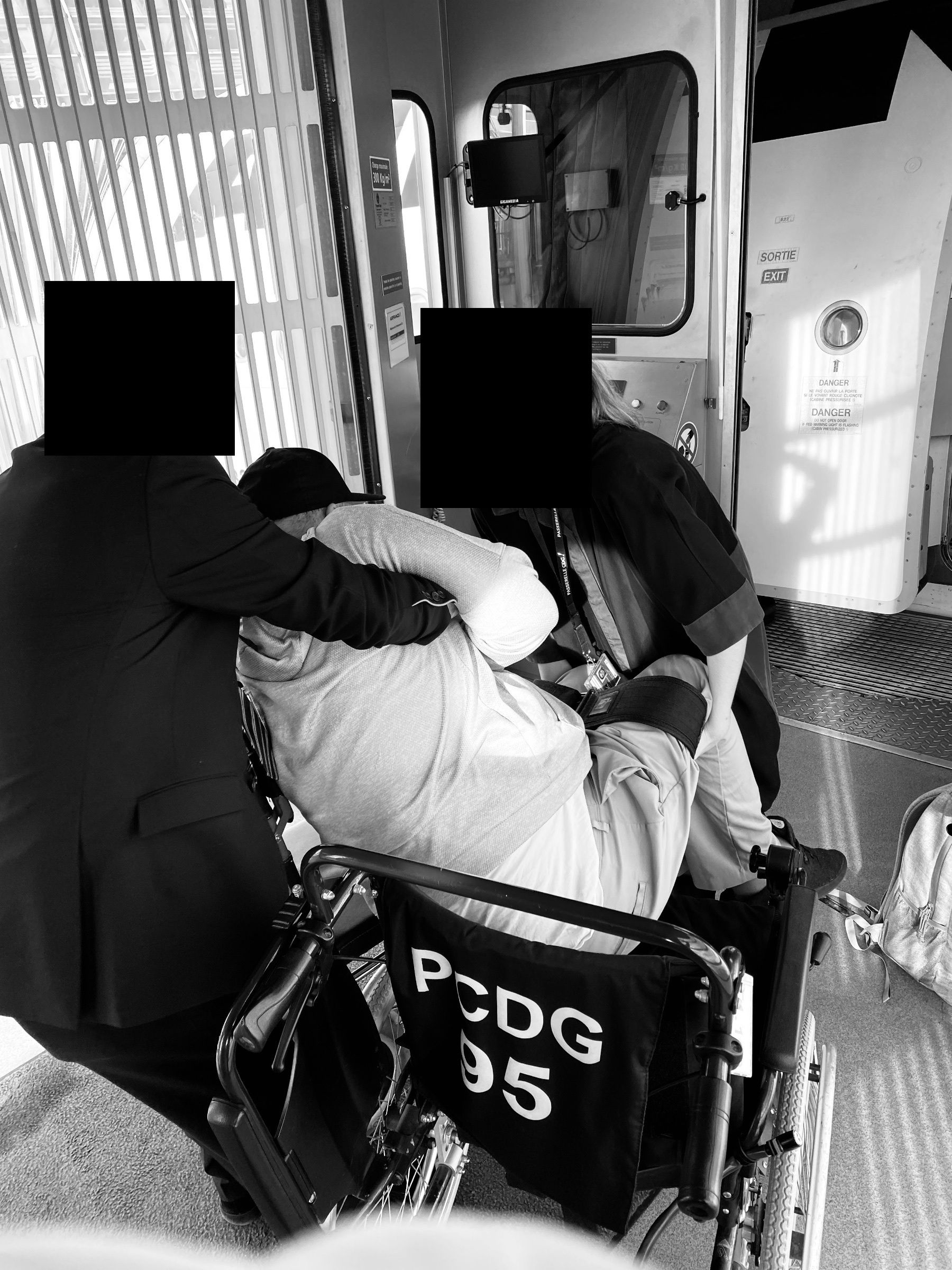
Dan: And aside from the wheelchair I have been injured myself while being transferred onto the plane. Like I said they don't always have people who are strong enough to lift me. There's been a couple times when I have been dropped, fortunately very slowly, but I'll like slide out of the person's arms onto the ground and they'll have to call in more people to lift me off the ground into the chair. I've been sat on my back - on my spine - on the metal edge of my seat on my wheelchair which was probably the most unpleasant thing that has happened to me. My shoulders my arms its just - especially if someone isn't trained that's when there's the most potential for an issue. So I don't know if I worry more about my body or my wheelchair when I'm flying. I won't say it rarely goes well, but only 30-40% of the time I feel like things actually go smoothly, which to me is too low.
RP: 30% success rate...that's definitely too low and I think we've heard enough to conclude that this is unacceptable way to treat a customer. And it seems like it's a pretty basic engineering problem - like ok just figure out how to make space for a wheelchair, make sure the person stays securely in the wheelchair during the flight, and make sure the wheelchair stays anchored to the floor. Feels like a doable set of engineering problems to solve...Dan, why hasn't this been solved already?
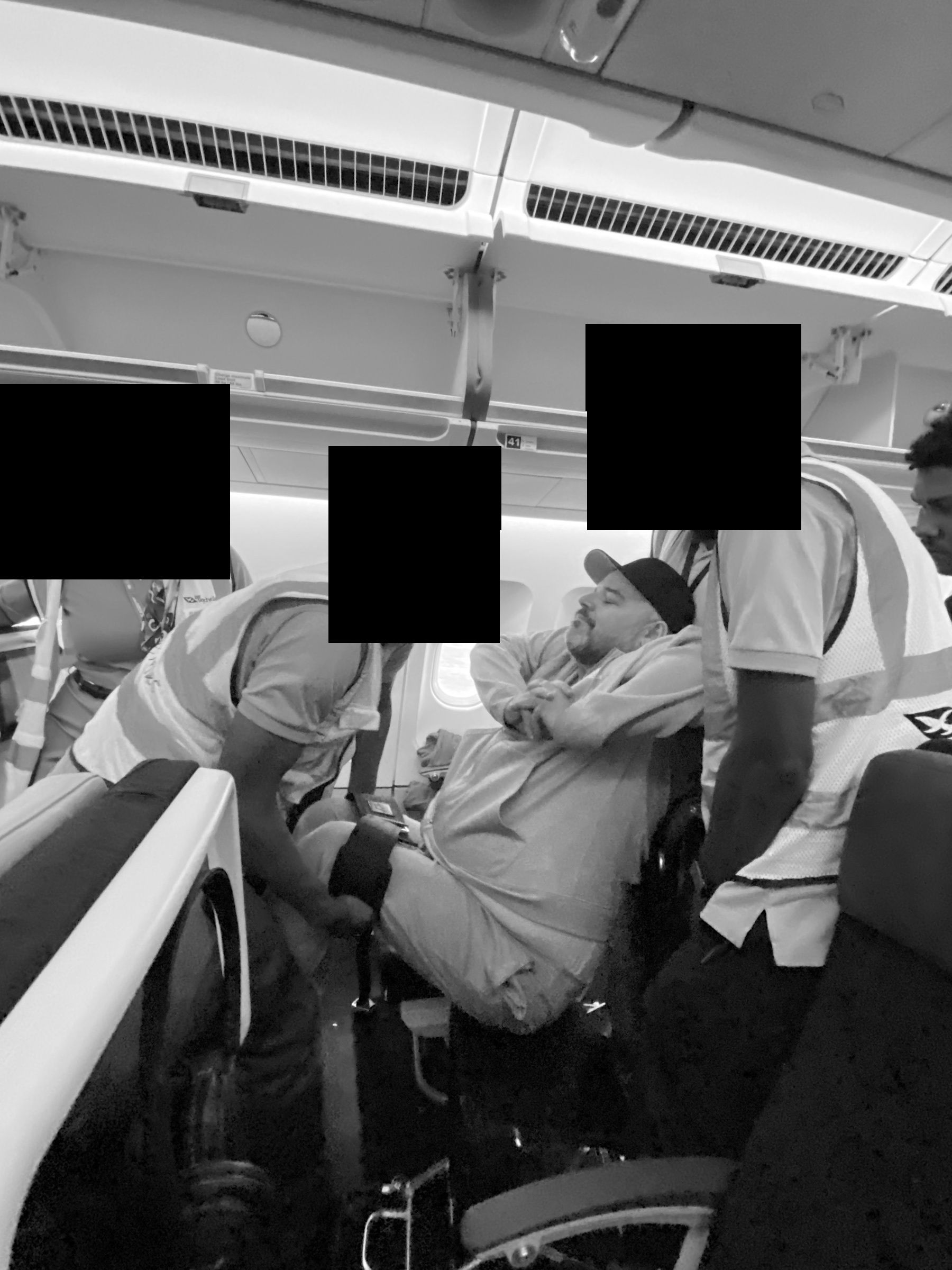
Dan: One reason I feel like they haven't put effort into solving this problem. I recent years I've seen many creative solutions to solving this problem. One idea that comes to mind is a group that reorganized the way the closet in the front of a smaller aircraft is used so that it could be used as a closet when there is not a person in a wheelchair on the plane, but then part of the closet can be removed so there's a big enough space for a person in a wheelchair. Just optimizing the space. Its easier for people to not use the closet and put their items in overhead bins than it is for a person in a wheelchair to get on a plane at this point. There are simple solutions that make me think this problem could actually be solved in the near future, which is promising to me, but I still think its going to take a law.
RP: To your point about the front closet idea: So I was flying recently and I got on a plane - I want to say it was a 757 - maybe. And you know when you first get on the plane you come in in the first class space. I noticed that in front of the first class space directly opposite of the entrance there was a space and they had placed two seats in that space, and those seats were very different configurations from the first class seats. They weren’t part of the original first-class configuration. It struck me that that’s a perfect space for one or two wheelchairs.
I did some digging into what the airline's official positions. They have some well-crafted carefully worded statements that invoke safety and regulations, and basically meant so many words say they just can’t let people stay in their wheelchairs.
But what is the science around this topic. Any fact-based experimentation or findings? I mean, you know, a wheelchair with a person in it - especially if it’s an electric wheelchair - is very heavy. You definitely do not want these thing coming loose and flying around the cabin if there’s turbulence or, heaven forbid, some kind of emergency landing. So what is the science here, you know G-forces, etc. Are there some prohibitive barriers here we should be aware of?
Dan: You ask about the science of the debate. As far as I'm concerned that's been settled. Airlines are required to have seats that could withstand 16Gs of force. A wheelchair that is restrained by what is called the Q-straint system used in cars has been successfully tested to withstand more than 16Gs. So it's not about whether a chair could be safe on a plane. It can be. It's more about the politics and the money. The airlines are afraid that if they have to make room for a wheelchair space they're going to lose revenue. They're going to have fewer seats they can sell on the plane. But they really have yet to prove that. They haven't put a lot of energy into solutions that could avoid that. It's been left up to private groups and engineering students projects to come up with ideas. Its really been something that the airlines and the airline industry haven't focused on until recently.
What's encouraging though is that I feel like things are happening. Up until a few weeks ago I thought it was superficial: until I got a survey from Boeing - pretty indepth. They even want people to fly with Boeing employees so they can document what happens on a flight for someone in a wheelchair. There are a couple organizations working on this as well. But to this point its really been a grassroots effort.
It's funny, people say capitalism is great, and I do a agree its great, but it has its downfalls. To this point it has inhibited airline's from exploring how to accommodate people in wheelchairs in a way that's more comfortable. I mean commercial air flight has been around for a hundred years. If airlines were going to do this out of the kindness of their hearts, they would have done it already.
So I really think its going to take a law to force them to do it. There was a law required to force them to use the newer safer 16G airline seats!
It's not going to be something they're going to do by themselves. I think it's going to require an intervention.
RP: Dan thank you so much for taking time out of your busy schedule to help us learn about this critical issue. I also need to give a special shout out to Michelle Tricca for the set of stunning photographs that accompany the newsletter version of this S3T interview. Michelle Tricca is a portrait photographer who documented one of Dan's airline experiences with a series of poignant black and white photographs.
You'll see for yourself the experiences that Dan described during our interview: being transferred in and out of his wheelchair by airline staff. And you can't help but realize - this is not easy or even safe for the airline workers who are forced to lift disabled individuals in and out of wheelchairs due to the airline's current policies.
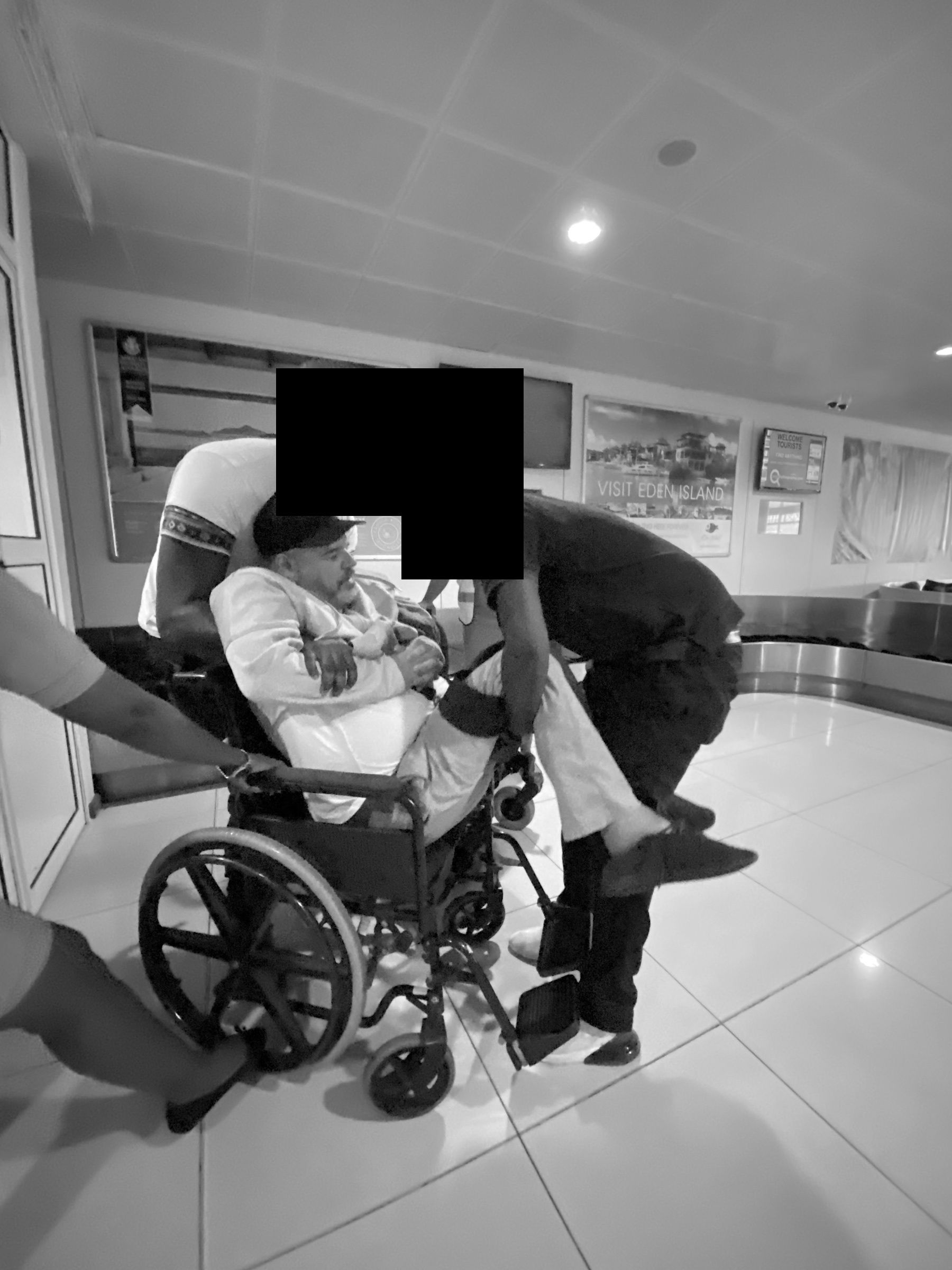
This is THE set of photographs that every airline leader, executive and board member needs to see. Look at these photographs and ask yourself, is this our best?
Which airline will be the first to demonstrate the engineering talent and change leadership skills to successfully solve this?
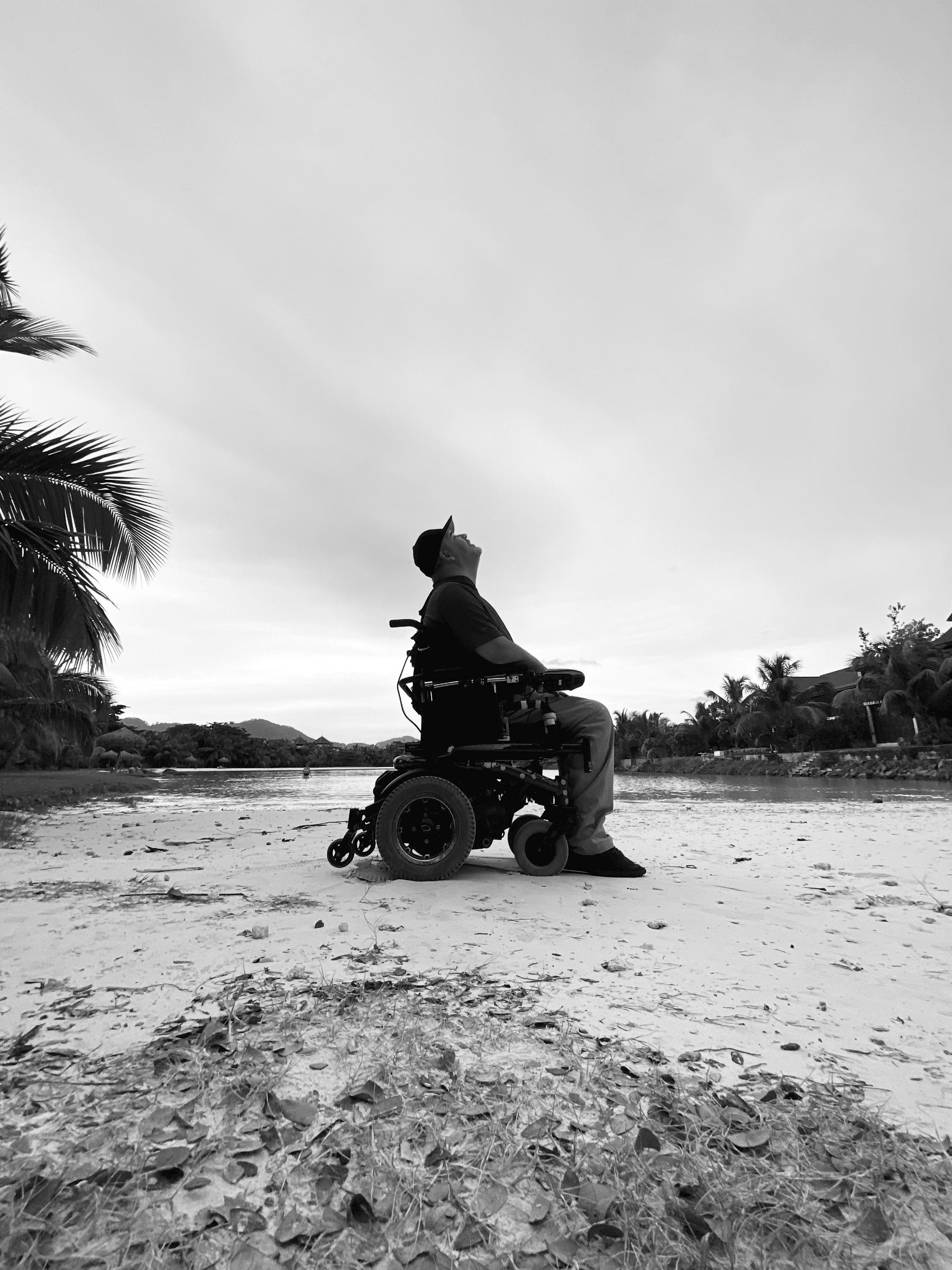
What can you do?
First, I strongly recommend listening to the Podcast with Dan's interview, while looking at the photos in this newsletter. Just let it sink in that every day people in wheelchairs have to endure this when they fly.
Handy list of options for taking action on this issue in a style that works for you:
Let others know this is an important issue
I suggest sending a link to the podcast or newsletter website with a short thoughtful note explaining in your own words why this deserves more diligence and focus.
- Share this podcast (and newsletter) with your elected representatives.
- Forward the email newsletter edition of this interview (with Michelle Tricca's photographs) to your friends and family. Encourage them to spread the word.
- If you know someone who works at an airline, airline workers union or aircraft manufacturer, share this podcast and newsletter with them, along with a word of encouragement that you hope they'll solve this, and that you appreciate their focus on this issue.
- Follow @chairsintheair on Instagram
- Contact your airlines and tell them this issue is important to you
- Share a note or tweet of thanks to Boeing (@BoeingAirplanes on Twitter) for starting a study to allow people to stay in their own wheelchairs when they fly. Contact Airbus (@Airbus) and ask them if/when they are doing a similar study. Let them both know this matters.
Get informed and connected
- DOT Secretary Pete Buttigieg pressures on FAA and airlines to address wheelchair issue.
- National Academies report says most airplanes could allow passengers to remain in their own wheelchairs.
- WSU has designed a cabin configuration that allows passengers to remain in their wheelchairs while in flight.
- Skift article on yet another configuration allowing passengers to fly in their own wheelchairs, with additional context on the different groups working to solve this. This article points out that the air industry and the FAA both have historically been unwilling to provide serious funding for studying this issue.
More from S3T
Curated topics, tools and resources for paying members only. If you don't have Full Access: Sign up now. (Why it's worth it)
🏫 S3T Resource Library
Curated collections of time-saving explainers and accelerators that frame key trends and issues with important context and perspectives. Some include worksheets or additional resources.
🛠 40 Best Online Tools & Resources
Top trusted online tools to save you time and $$$, as well as best online sources for emerging tech & research, economic insights, shifts, trends, history, culture & nature.
🌍 Global Economic Dashboard
500+ US & Intl real-time economic indicators organized by nation and release dates. Tap or click any indicator for detailed charts.
🪙 Crypto Market Caps
Top 100 Crypto Market Prices and Indicators. Colors indicate 24hr price movement, size of boxes indicate Market Cap.
💎 3 Questions to get you ready for the coming week.
This simple exercise helps you regroup and recommit so you can learn and do more in the coming week.
💬 Final Note:
Welcome to the new members! Thank you all again for reading and sharing. Be sure to move this email to your inbox or star it as important so you don't miss any editions!
Hope you are all S3T for a successful week! Feel free to forward this newsletter to a friend and continue the conversation on the S3T Discord, Twitter or LinkedIn. If you or someone you know haven't signed up here's why its worth it.
Thank you!
Ralph
Opinions mine. Not financial advice. I may hold assets discussed.

Member discussion